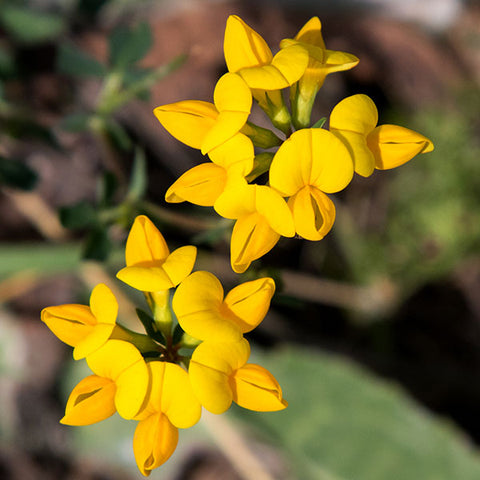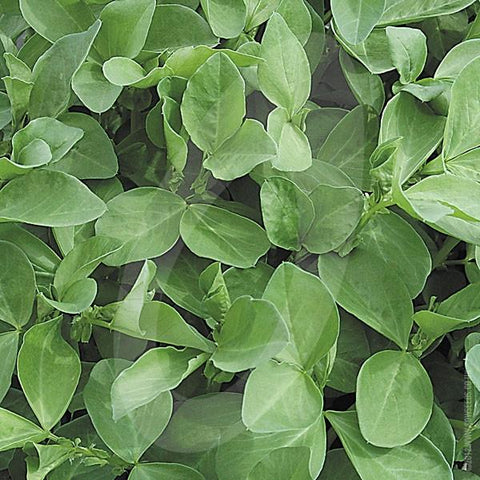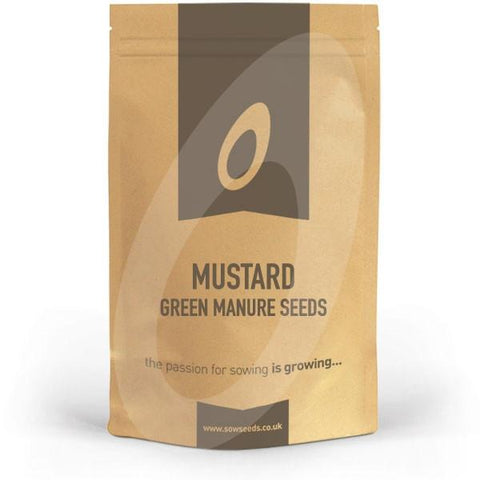The flowers in the Bees & Butterfly Wildflower Meadow seed mix will help you create a flower-rich meadow with a particular emphasis on species that are known to be important as sources of nectar for bees, butterflies and other insects.
If you ever wondered what beekeepers sow to attract the bees then look no further!
This mix contains 100% wildflower seed, with NO GRASSES, and is ideal for those situations where you wish to sow straight onto a weed-free seedbed. It can also be sown onto established grass, but it is vital to remove as much grass as possible - see sowing instructions. This mix is 100% native UK origin.
Contains varieties that are identified by the RHS as beneficial for the pollinators in your garden.
If you are sowing on to established grass it is advisable to add Yellow Rattle as this will help to ensure that the existing grass doesn't start to dominate the wildflowers.
You can buy Yellow Rattle in a variety of pack sizes to suit the sowing area that you require [HERE]
Bees & Butterfly Wildflower Seed Mix Information
|
|
|
When to Sow:
|
Best results will be obtained once soil temperatures are at least 10 degrees, therefore April to September is the optimum time
|
|
Soil / Site Conditions:
|
Full sun, partial sun
Most soil types
|
|
How to Sow:
|
Bee & Butterfly Wildflower Seed Mix can be used to overseed into existing grass, provided the sward comprises only fine-leaved grasses and does not include ryegrass, agricultural species or weeds.
Seedbed
Bee & Butterfly Wildflower Seed Mix performs best in low nutrient soils, which haven't been heavily fertilised in the past. For best results sow into bare soil after clearing all existing plants and weeds from the area.
Cultivate the ground to a depth of 5-10cm to relieve compaction and create a fine level tilth, free from obstructions. Broadcast the seed at a rate of 4.5gm per sq metre (The seed can be mixed with sharp sand to ensure a more even spread). Finish the seedbed by treading or lightly rolling the area, so that it is firm enough to stand on without leaving indentations. If dry conditions, lightly water.
Existing Grass
Firstly mow the grass area very short. Using a rake or harrow, the grass then needs to be raked to remove the thatch (the layer of dead grass and moss that builds up on the soil surface). If necessary, then use a 3 pronged hoe to break up the soil surface. This scarification is really important; the seed must be able to reach the soil surface. Aim for at least 50% bare soil, preferably more - as Monty says you need to beat the hell out of the grass! Broadcast the seed at a rate of 4.5gm per sq metre (The seed can be mixed with sharp sand to ensure a more even spread). Walk over the seeded area ensuring that the total ground is walked upon - mimics the action that animals would do in nature. This is to ensure that the seeds are in contact with the soil, which is vital for germination. If dry conditions, lightly water.
|
|
Care:
|
Carefully water during dry weather, and keep on top of removing weeds until the meadow begins to establish.
Perennial species can be slow to establish and are unlikely to flower in the first year. Annual species will generally flower in year one. During the first year remove any weeds which grow before they run to seed. Weed growth is common due to the action of disturbing the ground. The area can be cut once the flowers have died back in the autumn. We recommend leaving the area undisturbed for as long as possible, ideally until February / March (before the first spring growth). The dead flowers and stems provide a diverse environment which is a haven for wildlife through the winter months. Cut the area down to around 10cm using a scythe, strimmer or mower, leaving the cuttings for up to a week before removing. This will allow them to dry and shed seeds back into the soil.
Germination of wildflower seeds can be erratic and some species require vernalisation before germination in spring of the following year, e.g. a period of prolonged cold temperatures.
Be aware that it can take several years for the meadow to become established, patience is required, just as in nature!
|
|
Sow Rate:
|
4.5 grams per square metre.
|
|
Pack Weight / Area:
|
|
|
When to Sow Bees & Butterfly Wildflower Seed Mix
| Jan |
Feb |
Mar |
Apr |
May |
Jun |
Jul |
Aug |
Sep |
Oct |
Nov |
Dec |
 |
|
|
 |
 |
 |
 |
 |
 |
|
 |
 |
Bees & Butterfly Wildflower Seed Mix Contents
Alsike Clover, Birdsfoot Trefoil, Black Knapweed, Borage, Late Flowering Red Clover, Musk Mallow, Phacelia, Sainfoin, Yellow Trefoil
Species subject to change without notice due to availability
General Wildflower Seed Information & Advice
Follow the links below for more information on Wildflowers:
> Video of Monty Don Showing How To Sow A Wildflower Meadow
> Wildflower Seed Sowing Advice
> Benefits of Growing Wildflowers
UK & Ireland Deliveries
All orders are usually dispatched the next working working day and are delivered either via Royal Mail 2nd Class Delivery (3-5 working day service) or 48 Hour Parcel Courier (depending on size and weight). These delivery times shown are to be used as a guide and are not guaranteed.
Please note, we are unable to deliver seeds to countries outside the UK and Ireland.
Click here to view our delivery charges.



























